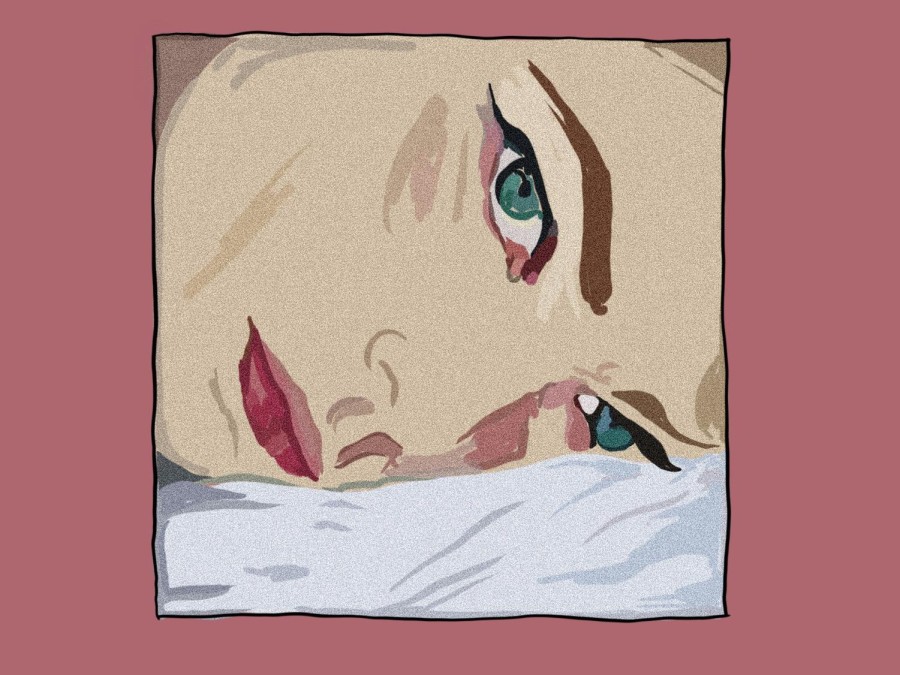Review: ‘Cleopatra and Frankenstein’ tackles love and loneliness
NYU alum Coco Mellors’ “Cleopatra and Frankenstein” is a complex narrative of love, loss, trauma and companionship.
(Illustration by Aaliya Luthra)
March 27, 2023
The recently released “Cleopatra and Frankenstein” by NYU alum Coco Mellor has taken social media by storm, particularly TikTok, where a hashtag for the book has garnered more than 3.1 million views on videos using it. Set in New York City, the novel opens with an endearing elevator meet-cute between protagonists Cleo and Frank. Frank is the 40-something-year-old owner of an advertising firm and Cleo is a 24-year-old aspiring artist from England. Right off the bat, Frank and Cleo’s electric dynamic pulls readers in.
The novel then jumps ahead a few months to Frank and Cleo getting married following a whirlwind romance. The novel continues jumping through several months as the couple’s enigmatic connection unravels, affecting the lives of those around them.
Mellors weaves an enticing tale of companionship and conflict within Cleo and Frank’s marriage. They’re from different walks of life and different generations, but both have demons nipping at their heels. Cleo is dealing with her mother’s passing and her strained relationship with her father. Frank faces similar struggles, with an estranged father and a mother who provided him with a less-than-healthy idea of love. As Frank turns to alcohol to numb his problems, Cleo grows frustrated with his frequent substance use. Despite their problems, the characters still feel deeply considered and relatable.
“Cleopatra and Frankenstein” is a compelling read for reasons beyond the core dynamic. The narration alternates between side characters’ perspectives, giving a chance for readers to construct their own account of the central romance. Some such narrators include Zoe, Frank’s sister; Santiago, a mutual friend whose party led to Frank and Cleo’s meet-cute; Anders, a former Scandinavian model and Frank’s best friend; Quentin, Cleo’s best friend; and Eleanor, one of Frank’s employees at the advertising firm.
Each character is complex and vibrant, their powerful presence on the page complementing the chaos of Frank and Cleo’s relationship. The narrators work to demonstrate how people in our lives, beyond our romantic partners, inform our sense of companionship. It ultimately divests importance from the broken love story at the heart of the novel and spotlights how other interpersonal relationships can offer individuals the support they need.
While the novel centers on a relationship between two lovers, it is ultimately more about loneliness than love. “Cleopatra and Frankenstein” is about two people dealing with familial issues and their own demons, who as a consequence latch on to one another to gain a sense of belonging.
More than anything, Mellors shows how you can still love and care for someone, yet not be good for them. Frank and Cleo realize that their age gap, their experiences with broken families and their lifestyles ultimately make them less than compatible. Sometimes, loving another person means separating yourself from them to give them room to grow.
The essence of “Cleopatra and Frankenstein” is encapsulated by a conversation between Zoe, Cleo and Cleo’s friend Audrey early on in the novel. Zoe relays to Cleo some advice from her yoga instructor: if someone is stuck in a hole, you can try as much as you want to help them get out, but the only way you can truly help them is to jump into the hole with them. Zoe dismisses the saying as silly, but Cleo reflects upon its meaning, muttering, “The hole is loneliness” to herself.
Mellors’ debut is an emotional, provoking and deeply relatable statement about a romantic partnership. “Cleopatra and Frankenstein” spins you around the hole of love, trauma and betrayal its characters experience, imparting lessons about how letting go might be a greater gesture of love than latching on to coupled loneliness.
Contact Aarna Dixit at [email protected].
























































































































































